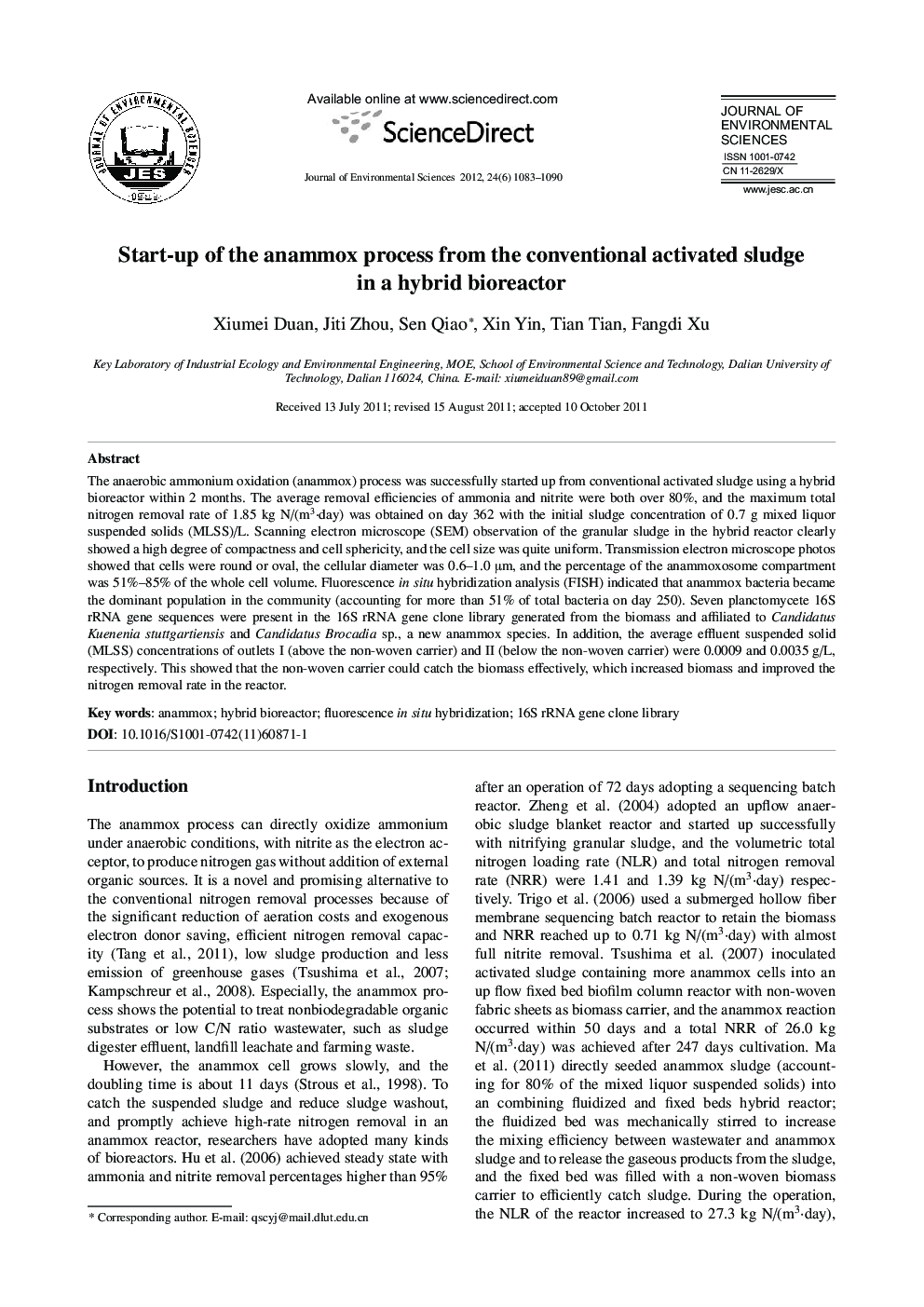| کد مقاله | کد نشریه | سال انتشار | مقاله انگلیسی | نسخه تمام متن |
|---|---|---|---|---|
| 4454549 | 1312485 | 2012 | 8 صفحه PDF | دانلود رایگان |

The anaerobic ammonium oxidation (anammox) process was successfully started up from conventional activated sludge using a hybrid bioreactor within 2 months. The average removal efficiencies of ammonia and nitrite were both over 80%, and the maximum total nitrogen removal rate of 1.85 kg N/(m3·day) was obtained on day 362 with the initial sludge concentration of 0.7 g mixed liquor suspended solids (MLSS)/L. Scanning electron microscope (SEM) observation of the granular sludge in the hybrid reactor clearly showed a high degree of compactness and cell sphericity, and the cell size was quite uniform. Transmission electron microscope photos showed that cells were round or oval, the cellular diameter was 0.6-1.0 μm, and the percentage of the anammoxosome compartment was 51%–85% of the whole cell volume. Fluorescence in situ hybridization analysis (FISH) indicated that anammox bacteria became the dominant population in the community (accounting for more than 51% of total bacteria on day 250). Seven planctomycete 16S rRNA gene sequences were present in the 16S rRNA gene clone library generated from the biomass and affiliated to Candidatus Kuenenia stuttgartiensis and Candidatus Brocadia sp., a new anammox species. In addition, the average effluent suspended solid (MLSS) concentrations of outlets I (above the non-woven carrier) and II (below the non-woven carrier) were 0.0009 and 0.0035 g/L, respectively. This showed that the non-woven carrier could catch the biomass effectively, which increased biomass and improved the nitrogen removal rate in the reactor.
Journal: Journal of Environmental Sciences - Volume 24, Issue 6, June 2012, Pages 1083-1090